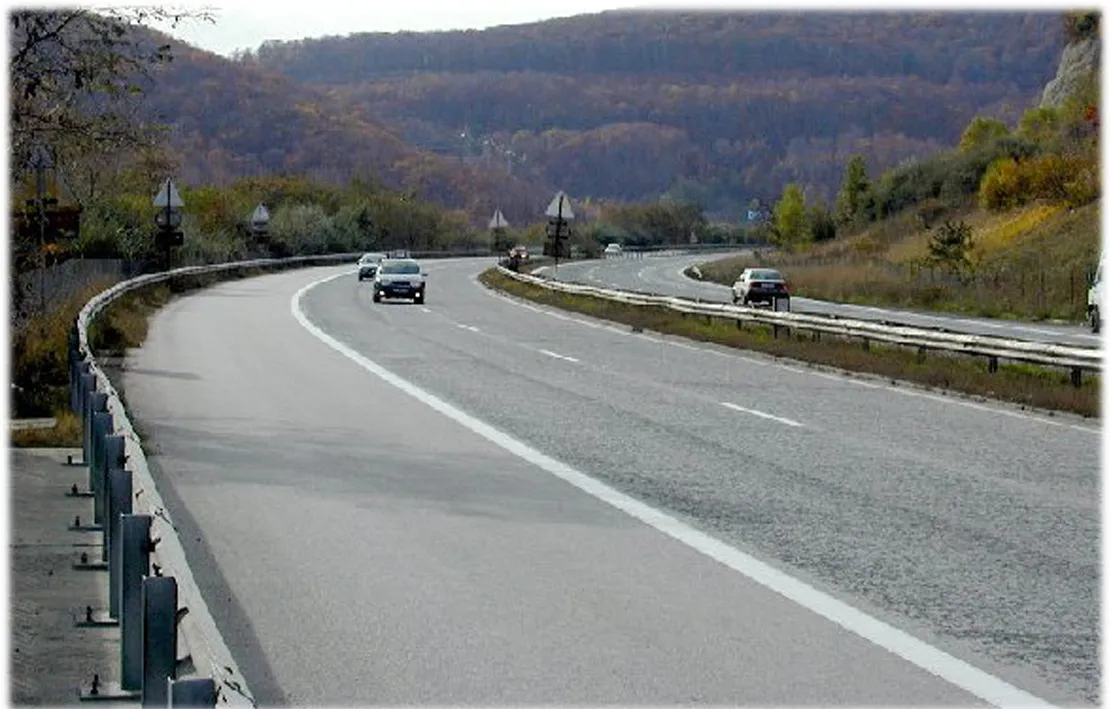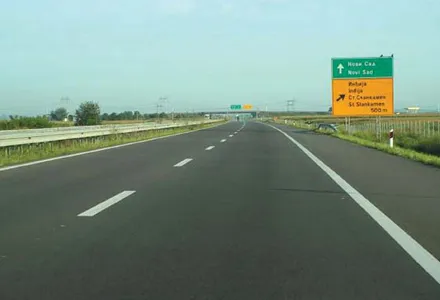There is a lot of work to do on Bulgarian roads, but the government has plans to increase the length of highways built each year as Krasimir Krastanov reports. Bulgarian roads with a pavement make up 98.4% of all the country's roads, while 92.5% of them have an asphalt surface and 82.8% of them are able to carry 10tonnes/axle.
February 21, 2012
Read time: 6 mins

There is a lot of work to do on Bulgarian roads, but the government has plans to increase the length of highways built each year as Krasimir Krastanov reports
Bulgarian roads with a pavement make up 98.4% of all the country's roads, while 92.5% of them have an asphalt surface and 82.8% of them are able to carry 10tonnes/axle.The length of the roads with no pavement is 272.1km (1.41% of the total length of the road system) and only 12 villages are not connected to the road network (61.2km). The local/municipal and private roads have a total length of over 24,000km. In addition, the length of the street network in the urban areas is over 60,000km.
The road network with highways and roads of Grades I, II, and III totalled 19,276km, and these are highways (331km), Grade I roads (2,961km), Grade II roads (4,012km), Grade III roads (11,730km) and road connections and nodes (242km).
The coverage of the national territory with highways of three and four lanes has been uneven. The east-west directions are more developed than the north-south ones because the services of the peripheral areas along the southern border, the River Danube bank and those located between the Pan-European Transport Corridors 4 [Dresden/Nuremberg, Prague, Vienna, Bratislava, Gyor, Budapest, Arad, Bucharest, Constanta/Craiova, Sofia, Thessaloniki/Plovdiv, Istanbul] and 9 [Helsinki, Vyborg, St Petersburg, Pskov, Gomel, Kiev, Ljubashevka, Chisinau, Bucharest, Dimitrovgrad, Alexandroupolis] is bad.
The road infrastructure development policy objectives of the Bulgarian government are to finish the construction of the Bulgarian highway system; reconstruct and rehabilitate road sections along the Trans-European Transport Corridors, and improve and standardise the transportoperational parameters of the road network There is a lot of work to do on Bulgarian roads, but the government has plans to increase the length of highways built each year as Krasimir Krastanov reports Building Bulgaria's roads through reconstruction and rehabilitation.
The funding needed for the construction of the highways will be provided by the national budget, the funds of the
In early 2009 the
However, another concession for the Hemus Highway cannot open before 2012 because in 2010 and 2011 the state adopted funds only for the design of the route.
The highway is not part of the European corridors, so it is not possible to rely on support from EU funds, and this is why the project is entirely in the hands of government.
Earlier this year, Rosen Plevnaliev, Minister of Regional Development and Public Works, said that by the end of December it is planned to build 50km new motorways, and from the start of 2011, 65km of highways will be built each year.
By the end of 2010 it is also planned that Bulgaria will start eight sections of the three highways: the Trakia, Lyulin and Maritsa at a total cost of about €900million.
The funds provided for construction of roads under the EU's OP (Operational Programme) Regional Development amount to totally €250 million EUR and those under OP Transport amount to nearly €1 billion.
The Trakia Highway is one of the largest road projects, and is part of Trans-European Transport Corridor 8 [from Durrës and Tirana in Albania to Skopje, Macedonia, and Sofia, Plovdiv, Varna- Constanta in Bulgaria] and the Trans-European Motorway. Construction of the 360.1km link has been prioritised as an infrastructural project of nationwide and international importance.
The motorway will be built in lots with Lot 1 (Orizovo-Stara Zagora) costing over €100 million.
The contractor for Lot 2 (from the town of Stara Zagora to the town of Nova Zagora with a total length of 31.7km) is Bulgarian company Trace Highway Unification, which was scheduled to start work on 3 May. On this section of the motorway the surface will be constructed using a polymer modified asphalt mix.
Lot 3 will run 34.3km from from Nova Zagora to Yambol while Lot 4 (49.1km from Yambol- Karnobat) has to be built within 28 months. Lots 2 and 3, which will cost some €204 million have to be completed in the summer of 2012. The Karnobat-Bourgas (Lot 5) section will cost over €76 million.
It is also planned to extend the Trakia Highway by another 100km where it will joined by the Cherno More (Black Sea) Highway leading to Bourgas and Varna. However, this will not be built until 2014 because funds will be taken from the next seven-year EU budget up to 2020.
Currently 85% of the construction of Lots 2, 3 and 4 are funded under OP Transport and the Bulgarian co-funding is only 15%. A loan has been provided by the
Meanwhile, Bulgarian company
The project includes strengthening and improving the about 35km of first-class and third-class roads by relaying the asphalt; providing new drainage and improving the existing drainage of road lanes; repair, widen and build new hydro isolation facilities; repair and replace railings and parapets, and renew vertical signalling and horizontal marking.
The Hemus Highway, Sofia ring road, Yana Railway Station link is part of Trans-European Transport Corridor 4 and construction of the new 8.5km long section will link the existing section of Hemus Highway to Sofia ring road.
Construction of the new section will substantially reduce the traffic intensity between road E79 (Botevgrad-Sofia and road I-6 Sofia-Bourgas). One very important objective of this project is to improve the environmental situation in this area, as well as to increase road safety.
At an estimated cost of €32 million, financing comes from the EU Cohesion Fund (80%) and cofinancing from the state budget (20%).
The Maritza Motorway is part of Pan- European Corridor 10, which connects Central Europe with Asia, and the project links the town of Parvomay and Kapitan Andreevo at the Turkish border. Its projected length is 114km of which 37km are built.
Bulgaria's GERB government has promised the completion of the Trakia, Maritza, and Lyulin routes by the end of its term in 2013, and tangible progress on the Struma Highway (Sofia to the Greek border) and Black Sea Highway.
Indicative value of the projects are nearly €209 million.
The Black Sea city of Varna will be the only town except for Sofia, where soon there will be two fully completed highways, according to Minister Plevnaliev.
He is reported as saying that regardless of the financial crisis currently existing in the country, there will be money for Lot 6 of the Trakia Highway (Black Sea) and that the important transport artery will be completed most probably by 2017.
The Lyulin Motorway will be about 19km long and is a project to build a motorway connecting Sofia with a junction near Pernik, where the connection with the future Struma Motorway will be made. The route has to be completed by 21 December, 2010.
The Bulgarian government has planned that in 2020 the country will have an operating road infrastructure: in the period 2014-2020, the Ministry of Regional Development will prepare projects for about €4 billion, and by 2013 funds provided for the operational programmes will amount to €2 billion.








